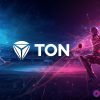Understanding the Foundations of Modern SEO
SEO today is far beyond the outdated tactics like keyword stuffing or buying links. It revolves around deeply understanding your audience to craft content that genuinely addresses their needs. Plus, continuous testing and performance assessment are essential to keep improving your rankings over time.
Structuring Your SEO Campaign with a Content Corpus
Organizing your SEO efforts effectively means focusing on a strategic collection of content, called a corpus. This approach emphasizes:
- Investing resources wisely by limiting the volume of content to what truly matters.
- Concentrating on 50 to 200 high-impact pages rather than spreading efforts too thin.
- Regularly updating existing valuable pages since search engines prefer fresh, informative content over brand new but less relevant pages.
These principles shape how you conduct keyword research and content development.
Keyword Research: Prioritize Relevance and User Intent
Effective keyword selection requires analyzing search volume and the real intent behind queries. Target a focused set of main topics or pillars—usually between four and six—to guide your content creation. For every keyword, develop authoritative content that directly addresses the user’s needs.
Using Semantic Keywords to Enhance Content Depth
In 2025, search engines rely heavily on understanding context and semantic relationships rather than just exact keyword matches. Incorporating related terms known as Latent Semantic Indexing (LSI) keywords helps algorithms grasp your content’s full meaning, improving rankings for a broader set of search queries.
To find LSI keywords, explore tools like LSIGraph, Clearscope, or Semrush’s Keyword Magic Tool, and use features such as Google Autocomplete and “People Also Ask” sections. Integrate these terms naturally in subheadings, image alt text, and meta descriptions to enrich your content’s relevance.
Designing Content for Readability and Engagement
Rather than obsessing over heading tags for SEO, focus on breaking your content into clear, digestible sections with intuitive headings. This helps visitors skim efficiently while engaging with your page longer, a behavior positively recognized by search engines.
Supporting elements like bullet points, images, callouts, and videos also contribute to keeping readers on your site, which can boost your search rankings.
Optimizing Page Elements for Clarity and Usability
Your page titles should be concise and keyword-aligned, serving as a clear summary of your content. Headings within the page should function like a roadmap, allowing users to quickly understand the scope of your article.
Keep URLs simple and focused—avoid unnecessary parameters or dates—to make them easy to remember and share.
Strategic Keyword Placement Without Overuse
Keywords remain important but must be placed thoughtfully to avoid unnatural or forced usage. Ideal locations include:
- URLs that clearly describe the page topic
- Headings that include primary and related keywords logically
- Image alt attributes that accurately describe visuals while incorporating relevant terms
Always prioritize readability and natural flow over keyword density.
Creating Content for People, Not Just Search Engines
The most successful SEO content balances search engine optimization with genuine value for readers. Write primarily to satisfy user questions or solve problems, then enhance your text with keywords where they fit seamlessly. This approach builds trust and keeps visitors engaged, signaling quality to search engines.
Tracking and Adapting Your SEO Performance
Implement analytics tools to monitor lead generation and traffic sources. Regularly review and update content based on data insights to maintain or improve your search rankings over time.














